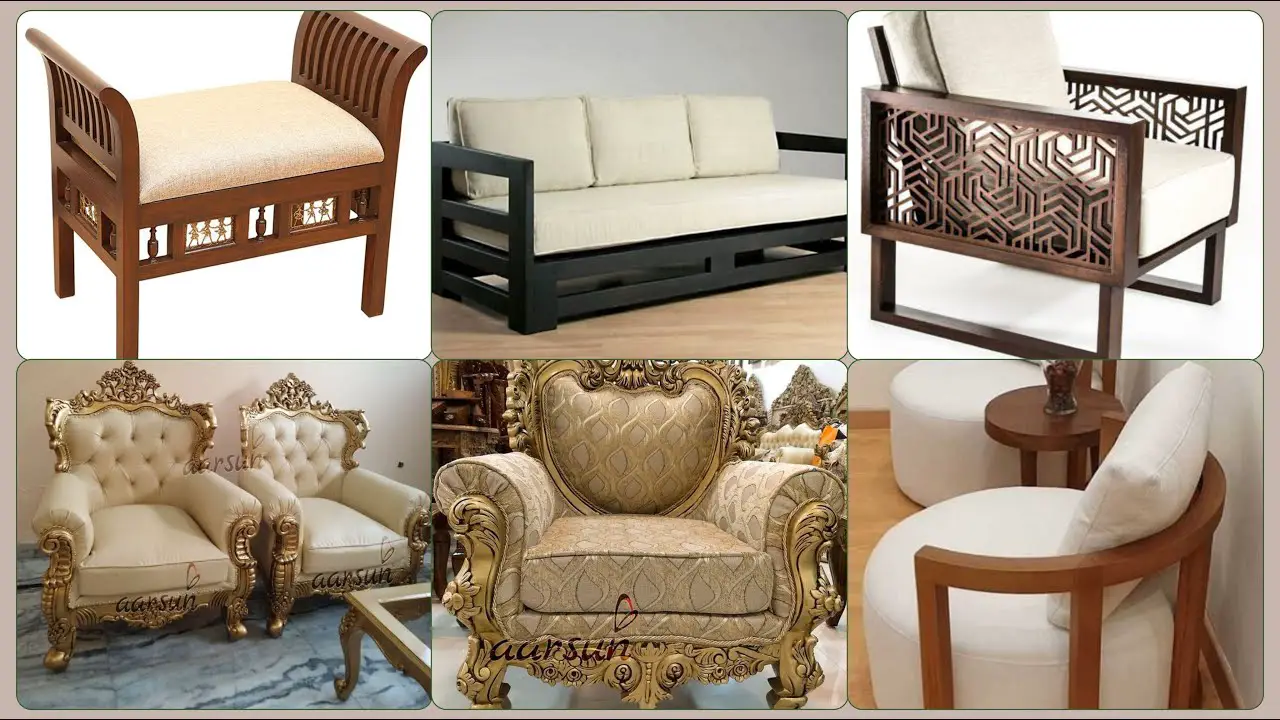The art and craft of wooden sofa design: tradition meets modernity.
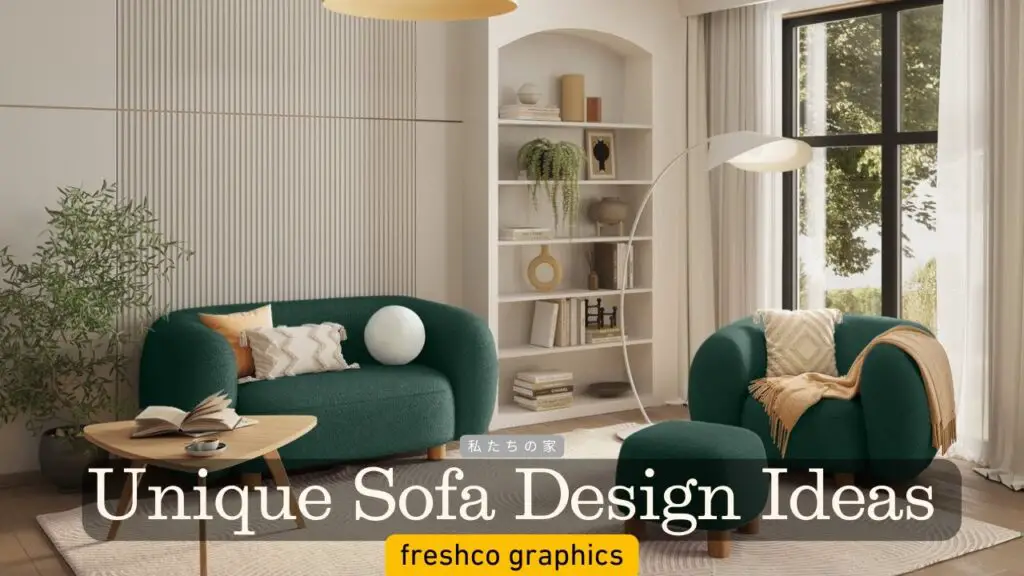
Introduction
Wooden sofas have been an integral part of home decor for centuries, admired for their sturdiness, adaptability and timeless appeal. In today’s interior design, wooden sofas represent a fusion of heritage and contemporary style, embodying a combination of craftsmanship, functionality and aesthetics. This article explores the intricacies of wooden sofa design, examining the evolution of styles, the importance of material choices, the role of craftsmanship, and the impact of modern technology and sustainability practices. Additionally, it answers specific questions about various aspects of wooden sofa design.
What is the wooden sofa design?
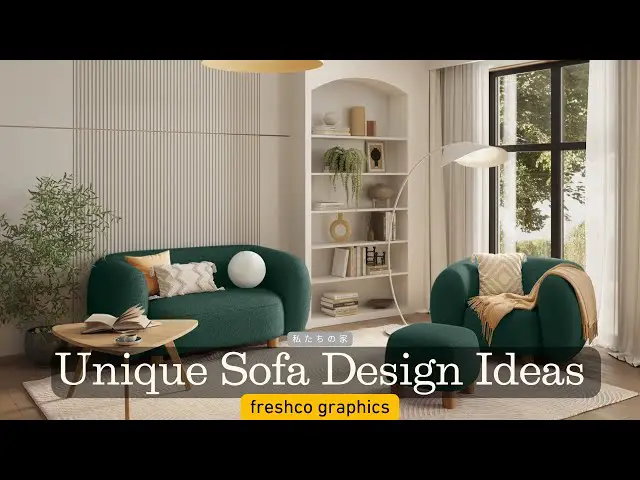
Wooden sofa designs mainly involve the creation of seating furniture made of wood. Design includes the style, structure, materials and finishes used to create a sofa that is both aesthetically pleasing and functional. It balances traditional craftsmanship with modern innovations to produce durable, comfortable and stylish furniture that can complement a variety of interior decors.
Table of Contents
Teak wood sofa design
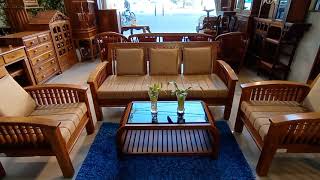
Teak wood: Teak is a highly sought-after wood for sofa design due to its natural oils, which make it resistant to water, insects and rot. This durability makes teak ideal for indoor and outdoor furniture.
Design elements: Teak wood sofas often have clean, strong lines with a natural finish that highlights the wood’s rich, golden brown color and fine grain. They can include simple, straight-backed designs or more elaborate, carved details that add a touch of elegance.
Solid wood sofa design
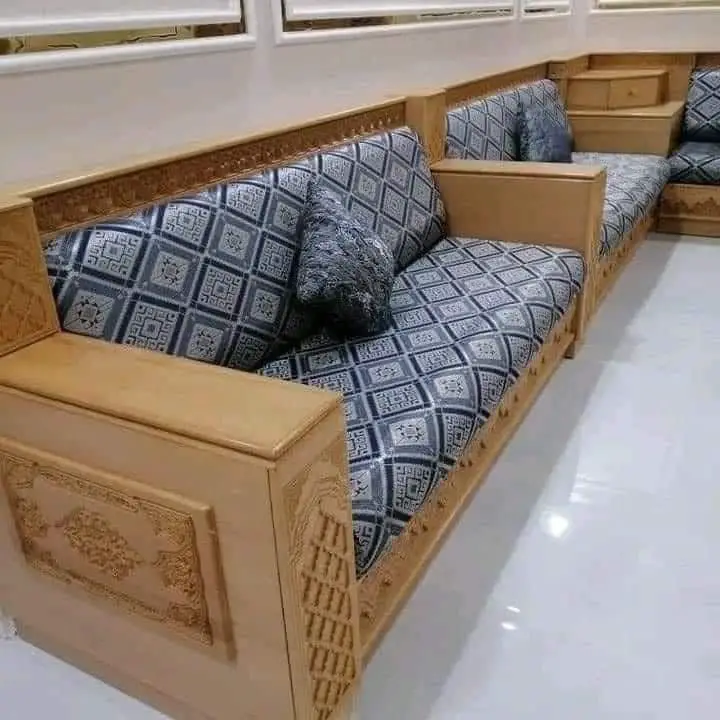
Durability and strength: Solid wood sofas are made entirely from hardwoods like oak, walnut, or maple, which ensure strength and longevity.
Aesthetic appeal: Solid wood’s natural grain and texture are prominent features, often enhanced by finishes that preserve the wood’s natural beauty. These sofas can range from traditional styles with decorative carvings to modern designs with sleek, minimalist lines.
Simple wooden sofa design
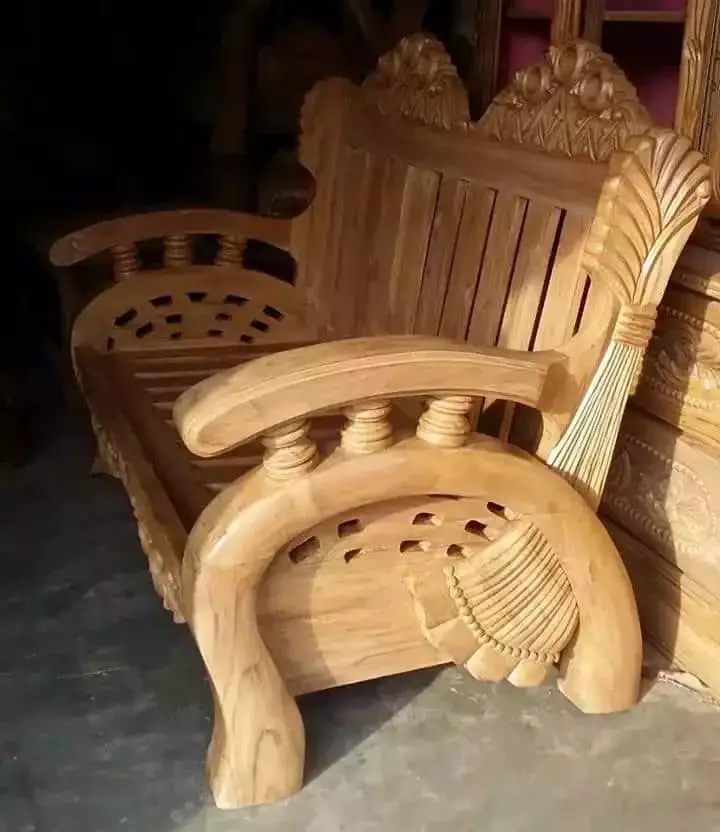
Minimalist approach: Simple wooden sofas emphasize functionality and ease of construction. They often feature simple designs with clean lines and minimal decoration.
Versatility: These sofas suit a variety of interior styles, providing a neutral base that can be dressed up with cushions and throws. The focus is on the beauty of the wood itself, often with a natural or lightly stained finish.
Modern wooden sofa design
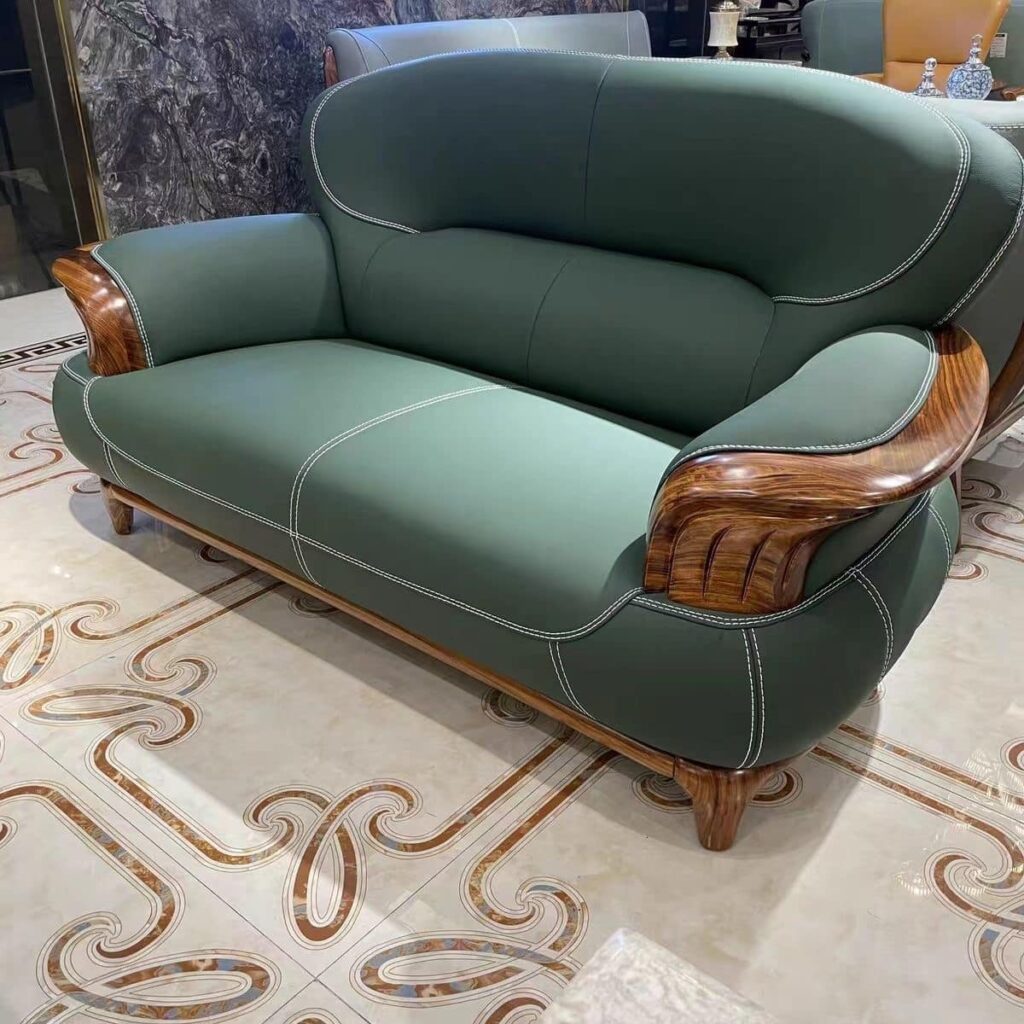
Modern Design: Modern wooden sofa designs combine contemporary aesthetics with traditional craftsmanship. They often have sleek, geometric lines and a combination of materials like metal, glass, or high-tech fabrics.
Customization and Modularity: Modern designs can include modular components that can be rearranged or customized to meet different spaces and needs, offering both flexibility and style.
Wooden sofa design in the Philippines
Cultural Influence: In the Philippines, wooden sofa designs often reflect a combination of indigenous craftsmanship and colonial influences. Materials such as mahogany, nara, and rattan are commonly used.
Handcrafted Elegance: Philippine wooden sofas are known for their intricate hand-carved details and sturdy construction. Traditional designs may include elements inspired by local flora and fauna, while modern interpretations combine them with contemporary styles.
Best wooden sofa design
Quality: The best wooden sofa design combines durability, comfort, aesthetic appeal, and functionality. It should use high-quality materials, exhibit excellent craftsmanship, and integrate well into the intended living space.
Examples: Examples of top designs include mid-century modern sofas made of walnut or oak, which feature clean lines and ergonomic seating, and traditional teak sofas with rich carvings and luxurious cushions.
The latest trends in wooden sofa design
Eco-friendly practices: Increasing emphasis on sustainability has led to the use of reclaimed and responsibly sourced wood.
Smart integration: Incorporating technology, such as built-in charging stations or modular designs that adapt to different uses, is becoming more popular.
Mixed Materials: Modern designs often combine wood with other materials such as metal, fabric and glass to create unique, eye-catching pieces that offer both style and functionality.
The evolution of wooden sofa style
The design of wooden sofas has undergone significant changes over the years due to cultural changes, technological advancements, and evolving tastes in interior design.
Traditional styles: Traditional wooden sofa designs often have intricate carvings and elaborate details, reflecting the craftsmanship of their era. Victorian, Rococo, and Colonial styles emphasize elegance and grandeur, with rich wood tones and upholstered cushions.
Mid-Century Modern: Emerging in the mid-20th century, this style is characterized by clean lines, minimal decor, and functional shapes. Wooden sofas of this era often combine wood with other materials such as metal and fabric, highlighting the natural beauty of wood through simple, elegant designs.
Material choices in wooden sofa design
The choice of wood is fundamental to the design and construction of a wooden sofa, affecting its durability, appearance and overall aesthetics.
Hardwoods vs. Softwoods: Hardwoods such as oak, walnut, maple, and cherry are prized for their strength, density, and wear resistance. They often have rich, distinct grain patterns that add to the visual appeal of the furniture. Softwoods like pine and cedar are lighter and generally less expensive, but they can be more prone to dents and scratches. However, they offer a warm, rustic charm and are easy to work with.
Sustainable wood: With growing environmental awareness, using sustainable and certified wood has become increasingly important. Bamboo, reclaimed wood, and woods certified by the Forest Stewardship Council (FSC) are popular choices for their low environmental impact and contribution to sustainable forestry practices.
Engineered Woods: Engineered wood products such as plywood and MDF (medium density fiberboard) are often used in sofa construction for their durability, affordability and versatility. These materials can be veneered with natural wood for a high-quality finish, reducing the demand for solid hardwoods.
Craftsmanship in wooden sofa design
Craftsmanship plays an important role in the quality and longevity of wooden sofas. Skilled artisans bring together traditional techniques and modern innovations to create pieces that are both functional and beautiful.
Joinery Techniques: Traditional joinery techniques such as mortise and tenon, dovetail and doweling ensure the structural integrity of wooden sofas without the need for nails or screws. These methods provide strong, durable connections that can withstand the test of time.
Carvings and Details: Hand-carved details add a unique touch to wooden sofas, reflecting the craftsman’s skill and attention to detail. Intricate patterns, shapes, and textures can transform a simple piece of furniture into a work of art.
Finishing: The finishing process enhances the natural beauty of the wood while protecting it from wear and damage. Finishes range from natural oils and waxes to lacquer and polyurethane coatings that highlight the grain of the wood to offer a more durable and glossy surface. Staining is another technique used to change the color of wood, allowing a variety of tones and shades to match different interior styles.
Modern technology in wooden sofa design
Advances in technology have significantly influenced the design and production of wooden sofas, enabling greater precision, efficiency and innovation.
Computer Aided Design (CAD): CAD software allows designers to create detailed 3D models of wooden sofas, facilitating precise planning and visualization. This technology enables the exploration of complex designs and the customization of furniture to meet specific needs and preferences.
CNC Machining: Computer Numerical Control (CNC) machines automate the cutting, carving and shaping of wood, allowing for intricate and consistent details that would be difficult to achieve by hand. CNC technology increases production efficiency and ensures high quality craftsmanship.
Sustainable manufacturing: Modern manufacturing processes are increasingly incorporating sustainable practices, such as optimizing the use of materials to minimize waste, using environmentally friendly adhesives and finishes, and energy-saving practices. implement. These practices not only reduce environmental impact but also appeal to environmentally conscious consumers.
Result
Wood sofa design is a dynamic field that balances tradition with innovation, functionality with aesthetics, and craftsmanship with durability. Understanding the evolution of style, the importance of material choices, the role of craftsmanship and the impact of modern technology and environmental practices allows designers and consumers to appreciate the art and craft of wood sofa making. As the industry continues to evolve, wooden sofas will continue to be a beloved and integral part of interior design, reflecting the enduring appeal of this versatile and timeless material.

